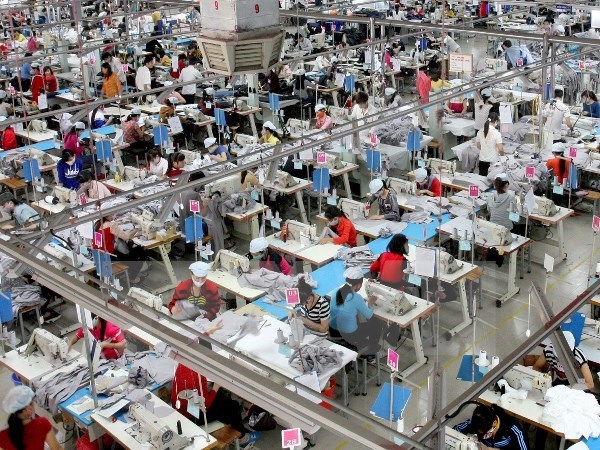The export knowledge of textiles and knitwear
Export textiles
At present, the export of Beijing to be subject to inspection by the Beijing Inspection and Quarantine Bureau of the main textile fabrics are cotton fabric, printing and dyeing cloth, blankets, cotton yarn and Artex products.First, the cotton fabric is not desizing dyeing woven products. It is based on user requirements woven into a different width of the product. Its color is cotton color, ordinary gray cloth is mainly used for the production and processing of clothing, but also wide and thick canvas fabric and used for the production of bed sheets of jacquard fabric. The production process of the main fabric is clear - carding - drawing - roving - spinning - winding - weft - warping - sizing - weaving - weaving - testing.
Second, the printing and dyeing cloth is the fabric desizing - rinse - dyeing - printing - drying process from the processing products. It is widely used in clothing, decoration and so on.
Third, the production of blankets mainly by the hair - comb spinning - weaving - hair - cutting - seam edge - test and other processes.
Fourth, the cotton yarn from the flowers - carding - and - Roving - spinning - winding and other processes to produce the primary products, it can be used for the production of woven fabric and knitted fabric.
5, Artex products break up embroidery, machine embroidery and hand-woven products. Varieties of table cloth category, meal sets of categories, bedding and decorative items.
Export knitwear
At present, the export of Beijing must be checked by the Beijing Inspection and Quarantine Bureau of knitted garments are mainly made of pure wool and pure cashmere clothing.
Knitted garments can be divided into underwear, sports and leisure category and sweaters. Different products of their production processes are not the same. Such as the production of underwear knitted garments must first be woven by the car into a drum-shaped fabric through the dyeing - rinse - stereotypes and then through the cut - bag sewing - ironing - inspection processes from processing. The woven sweater will have to go through the yarn - weaving - seam - Shrink - drying - ironing - testing - packaging and other processes to complete.
Sweater used by the raw materials are animal fibers, plant fibers, synthetic fibers and chemical fibers. Animal fibers are wool, rabbit hair, Angora wool, silk, cashmere and so on. Wool sweater production methods are hand-woven and woven. Hand-knit sweater is knitted with a needle or crochet products, woven sweater is produced by the machine products. The loom used by ordinary flat knitting machine, manual jacquard machine, computer jacquard and so on.

China's textile and apparel exports in 2016 decline situation is a foregone conclusion, unless there will be counter-cyclical late unconventional factors. Accordingly, China's textile and garment exports will appear more than 20 years of rare decline since last year's continuous decline.
Compared to textile exports, this year's garment export situation is almost bleak, except for the second quarter of the export data are basically flat, the rest of the time are negative growth. In this regard, He Xiaosi explained that compared to the textile industry in recent years since the transformation of more technology-intensive, capital-intensive features, the labor-intensive garment industry characteristics are not much changed.
The breakdown of the cost structure of related products can be seen, textile (gauze) raw material cost of the product cost of 65% to 70% of the total cost of clothing raw materials accounted for close to the total cost of five to Liu Cheng, Related products, competition is also mainly reflected in the cost. Therefore, in Southeast Asia, raw materials, labor, policy and a series of advantages of contrast, the comparative advantage of China's garment exports weaker.
G20 summit in Hangzhou is the impact of the stage, its textile and garment exports to China will be accompanied by the elimination of factory production. "In the fourth quarter, China's textile and garment exports decline will be narrowed." But He Xiaosi also reminded that will be held in November of the World Internet Conference held last year, also arranged for the surrounding areas of limited production, this year's meeting in Wuzhen, then limit the possibility of large-scale production, but also to the textile and garment exports have a negative impact.
Ordinary Christmas orders to bring the "Golden September" Quotes did not appear, in September, China's textile and garment exports in the early decline in the case of ushered in the fall is unexpectedly widening. Customs data show that in September alone, China's textile and apparel exports 22.765 billion US dollars, down 15.4%, down more than in August (exports fell 3.1%) to expand 12.3 percentage points over last September (exports fell 5.7%) to expand Nearly 10 percentage points. From January to September, textile and garment exports totaled $ 19,654,000,000, down 6.02%, a decline of 1.4 percentage points over the previous 8 months, expanding by nearly 3.6 percentage points over the first half.
Textile market is not the traditional peak season, the export market bursts of chill to Huarui information textile and garment information manager He Xiaosi feel industry winter has come ahead. According to monthly data breakdown, this year, textile and garment exports year on year growth in March were achieved a high rate of positive growth, then the basic continuation of the downward trend, only textiles exports in August to achieve positive growth again. At the same time, clothing exports since May this year, continued to decline, although the decline in September has increased, but the decline in little change. In September, the export of textiles was 7.72 billion US dollars, down 20.5 percent year on year, down 25 percentage points from August (export 10.246 billion US dollars, up 5.2 percent); clothing exports 15.045 billion US dollars, down 12.6 percent, 17.686 billion US dollars, down 7.3%) to expand by 5 percentage points.
Thus, textile and garment exports year-on-year growth rate of decline from the August single-digit decline to double-digit decline in September, mainly due to the textile exports from the positive growth in August to September's sharp decline. Although the breakdown of data related to specific products has not been announced, but He Xiaosi in an interview with the International Business Daily reporter pointed out that this is mainly by the G20 held in Hangzhou before and after the summit, Zhejiang and other places a lot of textile printing and dyeing Enterprises nearly half of the impact of limited production. Textile exports mainly in yarn, fabric and finished products, which accounted for about half of the fabric. Occupy half of the fabric export landslide will undoubtedly directly affect the export trend of textiles.
In order to ensure the beginning of September G20 Hangzhou summit, Hangzhou and the surrounding area for nearly half a month (August 24 to September 6) limited production. Zhejiang area of the printing and dyeing production capacity of about 65% of the country, and fabric processing for the fabric to go through bleaching, dyeing, printing and other post-processing processes. Dyeing plant stop production period, Zhejiang and more cloth clothing professional market is also caught in a state of no goods out of shutting down. Accordingly, He Xiaosi judge, leading to September textile exports from positive growth turned down the main factors should be a large area of ?? production of printing and dyeing production stagnation caused by the stagnation of fabrics, thereby affecting the fabric exports.
Of course, the weak external demand, industrial transfer, order the spread of the continuing impact of varying degrees, restricting the export of textile and clothing. This year, the demand for foreign trade continued to be weak, the Philippines, Turkey and other places frequent black swan events, the United Kingdom off Europe has further worsened the foreign trade environment.
At the same time, China's textile and apparel industry, including in the pain of the transition, rising costs in the case, and Vietnam, Cambodia and other Southeast Asian countries, China's textile and garment production of the comparative advantages of weaker, trade orders have dispersion. In this situation, many Chinese enterprises will be part of the production capacity transferred to Southeast Asia, has also led to the diversion of the relevant trade orders.(The Article from the China Textile Science and Technology Information Network)
Compared to textile exports, this year's garment export situation is almost bleak, except for the second quarter of the export data are basically flat, the rest of the time are negative growth. In this regard, He Xiaosi explained that compared to the textile industry in recent years since the transformation of more technology-intensive, capital-intensive features, the labor-intensive garment industry characteristics are not much changed.
The breakdown of the cost structure of related products can be seen, textile (gauze) raw material cost of the product cost of 65% to 70% of the total cost of clothing raw materials accounted for close to the total cost of five to Liu Cheng, Related products, competition is also mainly reflected in the cost. Therefore, in Southeast Asia, raw materials, labor, policy and a series of advantages of contrast, the comparative advantage of China's garment exports weaker.
G20 summit in Hangzhou is the impact of the stage, its textile and garment exports to China will be accompanied by the elimination of factory production. "In the fourth quarter, China's textile and garment exports decline will be narrowed." But He Xiaosi also reminded that will be held in November of the World Internet Conference held last year, also arranged for the surrounding areas of limited production, this year's meeting in Wuzhen, then limit the possibility of large-scale production, but also to the textile and garment exports have a negative impact.
Ordinary Christmas orders to bring the "Golden September" Quotes did not appear, in September, China's textile and garment exports in the early decline in the case of ushered in the fall is unexpectedly widening. Customs data show that in September alone, China's textile and apparel exports 22.765 billion US dollars, down 15.4%, down more than in August (exports fell 3.1%) to expand 12.3 percentage points over last September (exports fell 5.7%) to expand Nearly 10 percentage points. From January to September, textile and garment exports totaled $ 19,654,000,000, down 6.02%, a decline of 1.4 percentage points over the previous 8 months, expanding by nearly 3.6 percentage points over the first half.
Textile market is not the traditional peak season, the export market bursts of chill to Huarui information textile and garment information manager He Xiaosi feel industry winter has come ahead. According to monthly data breakdown, this year, textile and garment exports year on year growth in March were achieved a high rate of positive growth, then the basic continuation of the downward trend, only textiles exports in August to achieve positive growth again. At the same time, clothing exports since May this year, continued to decline, although the decline in September has increased, but the decline in little change. In September, the export of textiles was 7.72 billion US dollars, down 20.5 percent year on year, down 25 percentage points from August (export 10.246 billion US dollars, up 5.2 percent); clothing exports 15.045 billion US dollars, down 12.6 percent, 17.686 billion US dollars, down 7.3%) to expand by 5 percentage points.
Thus, textile and garment exports year-on-year growth rate of decline from the August single-digit decline to double-digit decline in September, mainly due to the textile exports from the positive growth in August to September's sharp decline. Although the breakdown of data related to specific products has not been announced, but He Xiaosi in an interview with the International Business Daily reporter pointed out that this is mainly by the G20 held in Hangzhou before and after the summit, Zhejiang and other places a lot of textile printing and dyeing Enterprises nearly half of the impact of limited production. Textile exports mainly in yarn, fabric and finished products, which accounted for about half of the fabric. Occupy half of the fabric export landslide will undoubtedly directly affect the export trend of textiles.
In order to ensure the beginning of September G20 Hangzhou summit, Hangzhou and the surrounding area for nearly half a month (August 24 to September 6) limited production. Zhejiang area of the printing and dyeing production capacity of about 65% of the country, and fabric processing for the fabric to go through bleaching, dyeing, printing and other post-processing processes. Dyeing plant stop production period, Zhejiang and more cloth clothing professional market is also caught in a state of no goods out of shutting down. Accordingly, He Xiaosi judge, leading to September textile exports from positive growth turned down the main factors should be a large area of ?? production of printing and dyeing production stagnation caused by the stagnation of fabrics, thereby affecting the fabric exports.
Of course, the weak external demand, industrial transfer, order the spread of the continuing impact of varying degrees, restricting the export of textile and clothing. This year, the demand for foreign trade continued to be weak, the Philippines, Turkey and other places frequent black swan events, the United Kingdom off Europe has further worsened the foreign trade environment.
At the same time, China's textile and apparel industry, including in the pain of the transition, rising costs in the case, and Vietnam, Cambodia and other Southeast Asian countries, China's textile and garment production of the comparative advantages of weaker, trade orders have dispersion. In this situation, many Chinese enterprises will be part of the production capacity transferred to Southeast Asia, has also led to the diversion of the relevant trade orders.(The Article from the China Textile Science and Technology Information Network)



